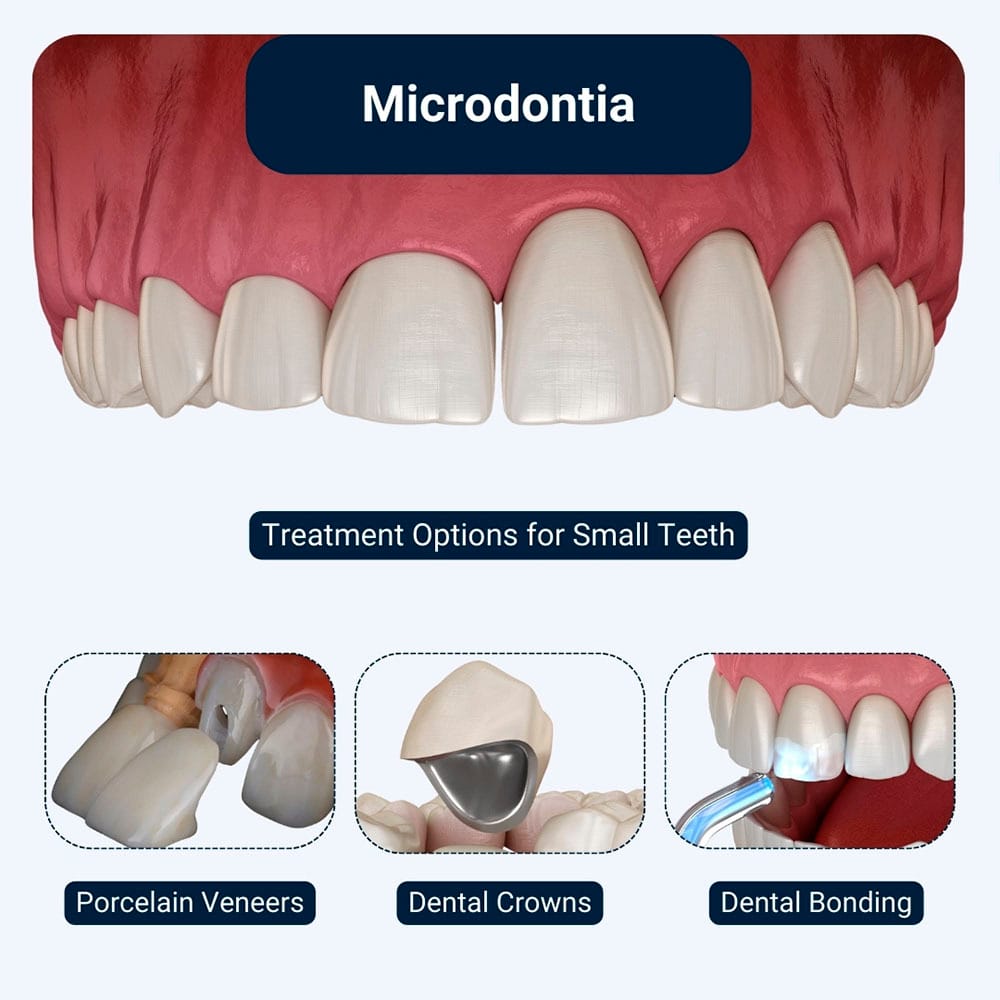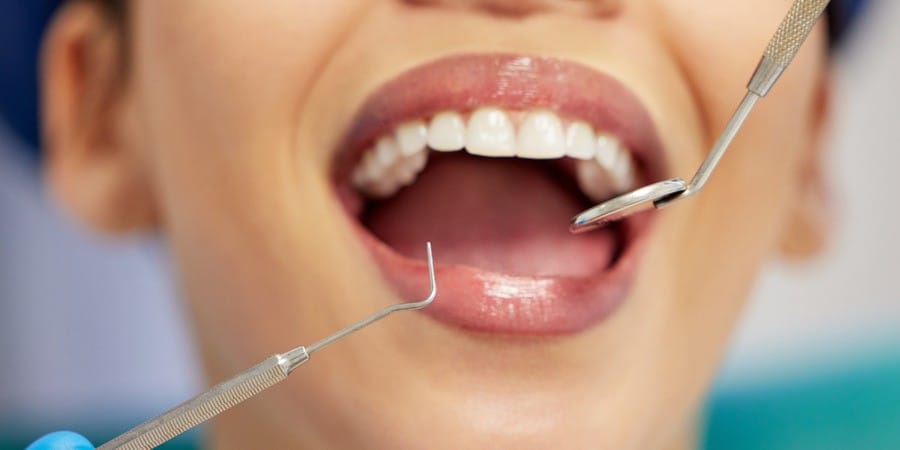What is Microdontia?
Microdontia typically affects one or two teeth. It is rare for it to affect all teeth. Microdontia can have genetic causes, and there might be other symptoms. The different types of microdontia are outlined below.

Localized
This is the most common type of microdontia, affecting one or two teeth. These teeth are usually in the upper jaw (maxilla).
The teeth most often affected are the lateral incisors on either side of your upper two front teeth. Sometimes, these teeth are shaped normally, but other times, they can look like a peg. In both cases, the teeth will be smaller than average.
Some people may have one small lateral incisor but will be missing the other lateral incisor. Alternatively, they may have a primary or baby tooth lateral incisor instead.
Relative Generalized
The keyword here is relative since this refers to someone with a protrusive or quite large jaw who could receive a diagnosis of microdontia. In this case, the size of the jaw makes teeth appear smaller than they are.
True Generalized
People with true generalized microdontia will have a complete set of uniformly smaller teeth than average. This condition is rare and generally linked to conditions like pituitary dwarfism.
It is possible for wisdom teeth or third molars also to be affected by microdontia. These teeth may be significantly smaller than the first and second molars.
What Can Cause Microdontia?
Usually, microdontia is due to environmental or inherited factors. Possible causes can include:
- Chemotherapy or radiation before age six can impact the development of teeth, resulting in small teeth in adults.
- People with Down’s syndrome can often have peg-shaped teeth.
- Babies born with cleft lip or palate may have microdontia on the cleft side.
- Fanconi anemia is when the bone marrow doesn’t produce enough blood cells, which can cause other symptoms, such as microdontia.
- Ectodermal dysplasia is a genetic condition that can cause smaller teeth that are often conically shaped.
Microdontia can be present in other rare genetic conditions. These conditions can also cause hypodontia, where someone has fewer teeth than average.
Do I Need to Get Treatment for Microdontia?
It can depend on the type of microdontia diagnosed by your healthcare provider. Many cases of local microdontia do not require any dental care. It depends on whether your teeth fit together properly or if the issue is causing increased wear and tear on your teeth. Often, people’s concerns are aesthetically oriented.
However, if you have a child and you are worried about microdontia, then they may need to see their pediatrician, especially if you have a family history of microdontia or the genetic disorders mentioned above. In addition, scheduling a dental checkup with us can help monitor any dental concerns and ensure proper care.
In this case, your child’s pediatrician may suggest genetic testing to determine if your child has any health concerns that could require other treatments.
Treating Microdontia
Possible treatment options include:
- Dental veneers
- Crowns
- Dental bonding
Dental veneers
If you have small teeth, veneers can work extremely well in helping to lengthen and increase their size. They are made from thin porcelain shells, covering the front of the tooth and creating a more aesthetically appealing smile.
Crowns
Crowns are also made from lifelike porcelain but are larger than veneers, covering the entire tooth. Usually, we need to prepare a tooth for a crown by removing some of its structure. Tooth preparation may not be necessary when treating microdontia, or only minimal preparation might be needed.
Dental Bonding
Dental bonding is the quickest and most cost-effective treatment. We apply tooth-colored composite resin directly to the tooth, harden it with light, and carefully shape and polish it to resemble a natural, full-sized tooth.
When to Come and See Us
If you are concerned about small teeth, schedule an appointment to come and see us at Clock Tower Dental. We can assess your teeth, discuss your concerns, such as how to make teeth longer, wider, or larger, and offer suitable treatment through our general dentistry services if required..

